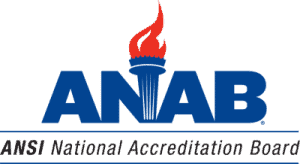Completing Accreditation Checklists

Sometimes it’s easy to lose sight of why an assessment is being performed in the first place. And the overall assessment is the context of filling out a checklist.
“What’s to understand?” a body seeking accreditation might reply. “I have to undergo an assessment, including filling out a checklist, because I want to get accredited and the checklist is just part of the process.”
That is true, but that doesn’t provide any helpful context to fill out a checklist.
Why Are Assessments Performed for Accreditation?
The more useful answer to “why is an assessment being performed” comes from understanding the basics of accreditation itself.
In general, the accreditation process is a demonstration that specified requirements are fulfilled. This very general description is a definition from the ISO/IEC 17000 standard for conformity assessment terminology. That description is not unique to accreditation; it describes a lot of activities. Accreditation, specifically as a demonstration that specified requirements are fulfilled, uses requirements for competence, consistency, and impartiality, and a conformity assessment body (testing laboratory, inspection body, certification body, validation/verification body, etc.) is demonstrating fulfillment of the requirements.
Why Are Accreditation Checklists Completed?
That last part is the context for completing an accreditation checklist. Specifically, completing an accreditation checklist is part of a conformity assessment body demonstrating its fulfillment of competence, consistency, and impartiality requirements to the accreditation body. In fact, completing the checklist is often the first interaction a conformity assessment body has in the accreditation body’s process to gather evidence that the conformity assessment body fulfills specified requirements; sufficient evidence of fulfillment of requirements is the basis for issuing accreditation. So, by completing a checklist, the body seeking accreditation starts providing evidence about how they fulfill each requirement on the checklist.
This provides helpful context for completing the checklist. The checklist is not looking for a pledge, promise or formal commitment that the conformity assessment body fulfills requirements. The conformity assessment body makes that commitment in the agreement it signs with the accreditation body (see ISO/IEC 17011 4.2 a.) So, there is no point to restating a commitment to fulfill a requirement in a checklist.
To illustrate this let’s use an obviously fictitious example of a requirement: a conformity assessment body shall provide a baseball cap along with every report of results delivered to clients.
For this requirement, do not complete the checklist by just restating the requirement as a commitment to fulfill the requirement. For example, do not respond with “Our conformity assessment body delivers a baseball cap with every report of results delivered to client.” This statement duplicates the same commitment already made by signing the accreditation agreement. Also, the statement does not contribute any evidence about how one fulfills the requirement.
What Needs to Be Recorded in Accreditation Checklists?
“OK,” a body seeking accreditation might say, “I understand what not to record, but I am still confused about what I should record.” It is easier to understand what to record by understanding the two general ways that conformity assessment bodies fulfill requirements for accreditation.
Bodies usually fulfill accreditation requirements either by implementing a process or by assigning a responsibility related to the requirement.
For the requirement in the example above, an entry in a checklist showing how a process fulfills the requirement would be “The Report Creation and Distribution process generates an email to the Shipping Department with instructions and the address for sending a baseball cap to the report recipient” and/or a reference to the specific process documentation specifying this.
For the requirement in the example above, an entry in a checklist showing how an assigned responsibility fulfills the requirement would be “The Manager signing the report of results is responsible for sending a baseball cap to the address shown on the report” along with a reference to the documentation of this responsibility.
What Evidence Is Provided in Accreditation Checklists?
Responses like these on a checklist provide an accreditation assessor two important types of evidence. First, by clearly stating how a requirement is fulfilled the conformity assessment body shows it understands the requirement and it understands how fulfilling the requirement helps assure competence, consistency and impartiality. Second, a reasonable and realistic description of how a requirement is fulfilled gets the body part way to demonstrating fulfillment of the requirement. If the description makes sense as fulfillment of the requirement then the accreditation assessor just needs to gather evidence that what has been described is actually taking place. As a result, the body seeking accreditation and the assessor are on the same page about what evidence will be sought during the rest of the assessment process, and that makes for a more efficient assessment as well.
“Wait a minute. I thought the accreditation assessor was supposed to determine my competence, but this sounds different.” No, it’s not actually different. Accreditation is a demonstration that competence, consistency, and impartiality requirements are fulfilled. The body seeking accreditation decides how to meet the requirements, including requirements related to competence. An assessor reviews how they meet the requirements for competence and must make a judgement that fulfillment is reasonable and realistic. This takes significant experience, knowledge, and skill by an assessor. In addition, an assessor must obtain sufficient evidence that what is described is actually taking place. Judging both the type and sufficiency of evidence takes significant experience, knowledge, and skill. The experience, knowledge, and skill of the assessor is critical in the assessment process.
The checklist is an opportunity to advance the overall assessment process as far as possible prior to the gathering of substantiating evidence. Information on the checklist that is as clear and focused on the requirement as possible delivers real benefits for the body seeking accreditation.
Learn more about accreditation checklists by watching the ANAB Webinar Accreditation Checklists for Dummies (How to complete them effectively)!






